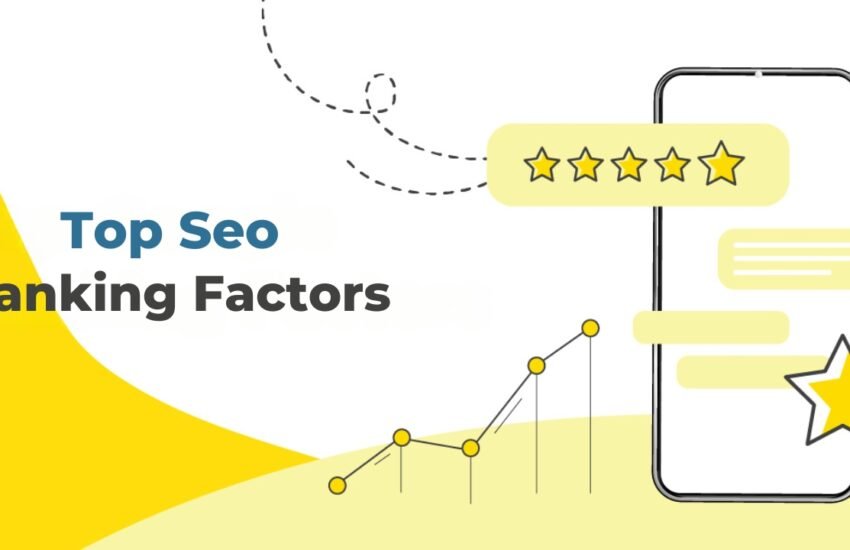The world of search engine optimization (SEO) is a dynamic landscape where understanding SEO ranking factors is crucial for businesses aiming to dominate online visibility. For American companies, from startups to established enterprises, mastering these factors can mean the difference between thriving in a competitive digital market or fading into obscurity. With search engines like Google constantly refining their algorithms, staying ahead requires a blend of technical expertise, user-focused content, and strategic adaptability. This blog dives deep into the core elements that influence search rankings, offering actionable insights to help businesses connect with their audience effectively. Whether you’re a small business owner in New York or a marketer in Silicon Valley, this guide will empower you to navigate the complexities of SEO with confidence.
Core Components of SEO Ranking Factors
SEO is a multifaceted discipline, and its ranking factors encompass a wide range of elements, from on-page optimization to off-page signals. Consequently, businesses must approach SEO holistically, ensuring that each component aligns with search engine expectations and user needs. Google’s algorithms, which power over 90% of global searches, prioritize websites that deliver value, relevance, and a seamless user experience. For American businesses, this means tailoring strategies to meet the preferences of a diverse, tech-savvy audience while adhering to Google’s E-E-A-T (Expertise, Authoritativeness, Trustworthiness) guidelines.
Technical and Content Synergy
One critical aspect of SEO is ensuring that websites are technically sound. Search engines favor sites that load quickly, are mobile-friendly, and have clean, crawlable structures. Moreover, content quality plays a pivotal role in determining rankings. High-quality content that addresses user intent, incorporates relevant keywords, and provides actionable insights is more likely to rank well. Additionally, off-page factors, such as backlinks from reputable sources, signal a website’s authority and trustworthiness. By focusing on these core areas, businesses can create a robust foundation for SEO success.
On-Page Optimization: Building a Strong Foundation
On-page optimization refers to the elements within a website that businesses can directly control to improve rankings. For example, optimizing title tags, meta descriptions, and header tags ensures that search engines understand the content’s relevance. Including the primary keyword in strategic locations like the title and H1 header enhances visibility. Furthermore, crafting content that aligns with user search intent is essential. For instance, an American e-commerce business selling fitness gear might create detailed product descriptions that answer common customer questions, thereby improving engagement and dwell time.
Enhancing Content with LSI Keywords
Another vital component of on-page SEO is internal linking. By connecting related pages within a website, businesses can guide users to valuable content while helping search engines understand the site’s structure. Additionally, incorporating latent semantic indexing (LSI) keywords—terms related to the main keyword, such as “search engine algorithms,” “keyword optimization,” or “content relevance”—enhances the content’s context. According to a study published on Google Scholar, semantic relevance in content significantly improves ranking performance by aligning with Google’s natural language processing capabilities (Haleem et al., 2021). Therefore, businesses must prioritize creating comprehensive, user-focused content to stay competitive.
Technical SEO: Ensuring Peak Performance
While content is king, technical SEO is the backbone that supports a website’s performance. A technically optimized site ensures that search engine crawlers can efficiently index its pages. For example, optimizing site speed is critical, as Google’s Core Web Vitals emphasize metrics like Largest Contentful Paint (LCP) and Cumulative Layout Shift (CLS). A slow-loading website not only frustrates users but also risks lower rankings. For American businesses targeting local audiences, ensuring mobile-friendliness is non-negotiable, as over 60% of searches in the U.S. originate from mobile devices.
Security and Structured Data
Moreover, a secure website with HTTPS encryption is a must. Google prioritizes secure sites, as they protect user data and build trust. Another technical consideration is structured data, which helps search engines understand content better through schema markup. For instance, a restaurant in Chicago could use schema to highlight its menu, reviews, or location, enhancing its chances of appearing in rich snippets. By addressing these technical elements, businesses can create a seamless experience that satisfies both users and search engines.
Content Quality: Captivating Your Audience
Content remains at the heart of SEO, and its quality directly impacts rankings. For American audiences, content must be engaging, relevant, and tailored to their needs. For example, a blog targeting U.S. consumers should use conversational language, incorporate cultural references, and address local pain points. High-quality content goes beyond keyword stuffing; it provides value by answering questions, solving problems, or offering unique insights. As noted by SEO expert Rand Fishkin,
“The best way to rank is to create content that people want to share, link to, and engage with” (Fishkin, 2020).
In-Depth and Updated Content
To achieve this, businesses should focus on creating in-depth, well-researched content. For instance, a tech company in San Francisco might publish a detailed guide on “How to Choose the Best Cloud Storage Solution,” incorporating LSI keywords like “cloud computing,” “data security,” and “storage solutions.” Additionally, updating existing content to reflect current trends or algorithm changes can boost rankings. By consistently delivering value, businesses can build trust with their audience and establish themselves as industry leaders.
Off-Page SEO: Establishing Authority
Off-page SEO focuses on external signals that influence a website’s authority, such as backlinks, social media engagement, and brand mentions. For American businesses, earning high-quality backlinks from reputable U.S.-based websites, such as industry blogs or news outlets, is a powerful way to boost credibility. However, quality matters more than quantity. A single link from a trusted source like Forbes or TechCrunch carries more weight than dozens of links from low-authority sites.
Local SEO and Social Signals
Additionally, local SEO plays a significant role for businesses targeting specific regions. For example, a bakery in Seattle could optimize its Google My Business profile to appear in local search results, encouraging reviews from satisfied customers. Social media signals, while not a direct ranking factor, also contribute to brand visibility and traffic. By fostering a strong online presence and earning endorsements from credible sources, businesses can enhance their authority and improve their rankings.
User Experience: A Cornerstone of SEO
User experience (UX) has become a cornerstone of SEO, as search engines prioritize sites that deliver seamless, enjoyable interactions. For American audiences, this means designing websites that are intuitive, visually appealing, and easy to navigate. For instance, a clear call-to-action (CTA) on a landing page can guide users toward making a purchase or signing up for a newsletter, reducing bounce rates. Additionally, ensuring accessibility—such as providing alt text for images or using readable fonts—enhances inclusivity and aligns with Google’s guidelines.
Boosting Engagement with Interactive Elements
Moreover, dwell time, or the amount of time users spend on a page, is a key indicator of content quality. Engaging elements like videos, infographics, or interactive tools can keep users on a site longer, signaling relevance to search engines. For example, a financial advisory firm in Boston might include a mortgage calculator on its website to engage users while providing practical value. By prioritizing UX, businesses can create a positive feedback loop that boosts both rankings and customer satisfaction.
Analytics: Refining Your SEO Strategy
Analytics are indispensable for understanding how SEO ranking factors impact performance. Tools like Google Analytics and Search Console provide insights into user behavior, keyword performance, and technical issues. For instance, analyzing bounce rates can reveal whether a page’s content aligns with user intent, while tracking click-through rates (CTR) can indicate the effectiveness of meta descriptions. By regularly reviewing these metrics, businesses can identify areas for improvement and adapt their strategies accordingly.
A/B Testing for Optimization
Furthermore, A/B testing allows businesses to experiment with different SEO approaches. For example, a retailer might test two versions of a product page to see which title tag generates more clicks. Data-driven decisions ensure that SEO efforts are aligned with business goals, maximizing return on investment. By leveraging analytics, American businesses can stay agile in a rapidly evolving digital landscape.
Conclusion: Mastering SEO for Long-Term Success
Mastering SEO is not a one-time task but an ongoing journey that requires adaptability, creativity, and a user-centric approach. For American businesses, the stakes are high in a competitive market where visibility can make or break success. By focusing on on-page optimization, technical excellence, high-quality content, and off-page authority, companies can build a robust SEO strategy that resonates with their audience. Additionally, prioritizing user experience and leveraging analytics ensures that strategies remain effective in the face of algorithm updates. As the digital landscape continues to evolve, businesses that embrace these principles will not only rank higher but also forge lasting connections with their customers. Start optimizing today, and unlock the full potential of your online presence.
you may also read
Nofollow Links and SEO: Secrets You Must Know



